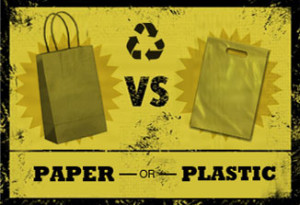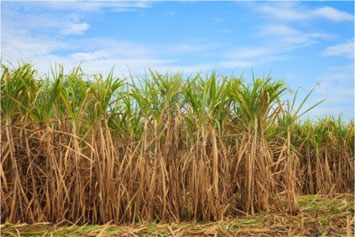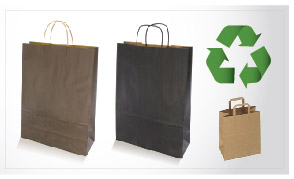
The historical “Gold Standard” for meeting environmental goals are “Reduce – Reuse – Recycle”. When retail packaging attempts to abide by these “rules”, there are numerous complications that must be weighed in a real environmental context.

The historical “Gold Standard” for meeting environmental goals are “Reduce – Reuse – Recycle”. When retail packaging attempts to abide by these “rules”, there are numerous complications that must be weighed in a real environmental context.

Sugar-cane paper is produced from the sugar-cane fibers that are the residue from the sugar-cane refining process. These fibers contain cellulose. Cellulose is the basic building block used to produce most papers. The sugar-cane fiber replaces the traditional wood-based fibers used to produce most papers.

Self-serving data refers to claims or “guarantees” issued by best parties, such as paper mills that are selling paper; converting mills that are selling packaging; and governments that are supporting or subsidizing commerce for export. Each of these official bodies can issue documents/letters asserting the 40% PCW content of shopping bags, as an example, which when tested by “third-party” accredited labs in the USA yields different or inconclusive results.


In our ongoing research and follow-up with paper mills, we have found that supporting the 40% Post-Consumer Waste (PCW) requirement with integrity is much more difficult than what seemed possible at first glance. Many paper sources/mills claim to produce paper with recycled content, but when third-party testing is utilized one finds contradictions, distorted data —much confusion.


Taking care of the environment is now part of our legislation and of our future. The laws are ever-changing and the fines for non-compliance continue to occur, increase. What’s more, you may not have a have a team of experts that can address –foresee– the newest changes; and you need a packaging source that realistically addresses the laws (before the fines knock at your door!). You also demand award-winning packaging that has great graphics and promotional value. This is a tall order; however, unique eco-certified packaging can now be part of your solution. The following steps will afford greater sustainability and compliance with the laws…

For an average consumer a shopping bag is just a simple object with two handles used for carrying shopping or grocery items which are commonly made from paper, plastic or other material which are durable enough to hold and transport items from the stores to their homes or other places. But for the seller it is not just a bag, for them the design and quality of the bag is part of their branding and marketing strategy. Business owners are aware of the two main functions of shopping bags in their business: first they are created to help buyers have a great shopping experience by providing them shopping bags that can carry all the goods that they bought. Second, it is the most cost-effective business promotional materials that they can give to their customers.
 ” At 90 Iris Apfel becomes the latest star to collaborate with MAC to produce a bold 20-piece collection.
” At 90 Iris Apfel becomes the latest star to collaborate with MAC to produce a bold 20-piece collection.
Born Iris Barrel in 1921, MAC’s latest collaborator worked at Women’s Wear Daily and for interior designer Elinor Johnson before launching a textile firm with her husband, Carl Apfel, called Old World Weavers in 1950. Up until her retirement from interior design in 1992 she worked on many projects, including work at the White House where she crossed paths with nine presidents: Truman, Eisenhower, Nixon, Kennedy, Johnson, Carter, Reagan, and Clinton. The things she must have seen…(read more)
source: http://www.elleuk.com
The plastic bags shoppers use to carry their goods home from the store have become an environmental battleground, and statistics are a key weapon in the fight.
Cities around the U.S. have banned or considered banning the bags because of their environmental impact. Manufacturers of the sacks have dueled with environmentalists and makers of reusable bags over carbon footprints. And last week, a maker of reusable bags settled a lawsuit filed by a plastic-bag manufacturer over competing numerical claims on bags’ imprint on the environment.
Reusable-bag makers, which market sacks made of sturdy canvas or recycled plastic meant for years or a lifetime of use, claim disposable plastic bags impose a big burden on the environment and deplete fossil fuels. Plastic-bag makers counter that a large proportion of their bags are reused or recycled, and that reusable bags must be washed frequently, diminishing their green credentials.
100% waterproof, tear and stain resistant, prints beautifully, available in opaques and translucent. Ultra smooth Polypropylene makes incredibly strong and reusable shopping bags.
Environmental considerations:
No Ozone layer threatening emissions resulting from the manufacturing process. It is 100% recyclable and generates no detectable amounts of sulfur, chlorine, nitrogen or dioxide gas when properly incinerated.
Only now are we realizing the tremendous advantages of using Tyvek for shopping bags. Tyvek is considerably stronger than non-woven base material so it is much more “reusable” and has a much longer usable life. And Tyvek is washable in a way that non-wovens aren’t.
Tyvek can be printed in sophisticated designs and a full spectrum of colors.
So we at Modern Arts are teaming up with our partners at DuPont, and our colleagues at a manufacturing plant south of the border, to experiment with making Tyvek shopping bags in exciting shapes, new sizes and vibrant colors.
We’ll keep you posted on how it works out.